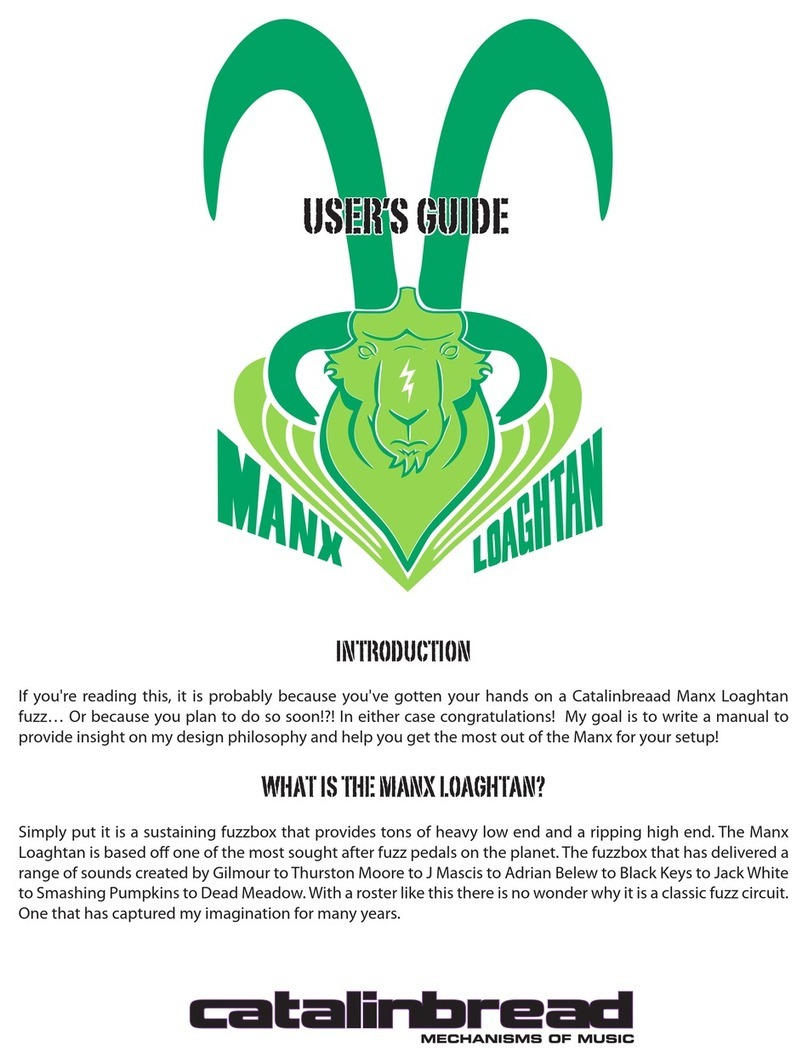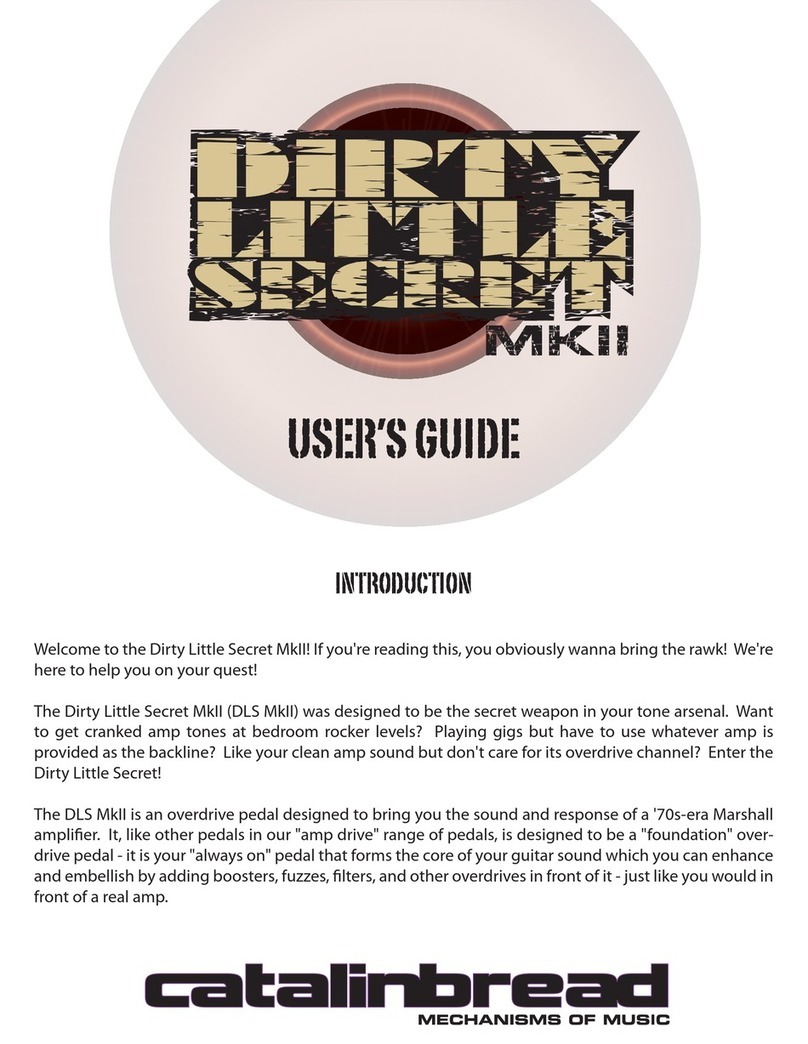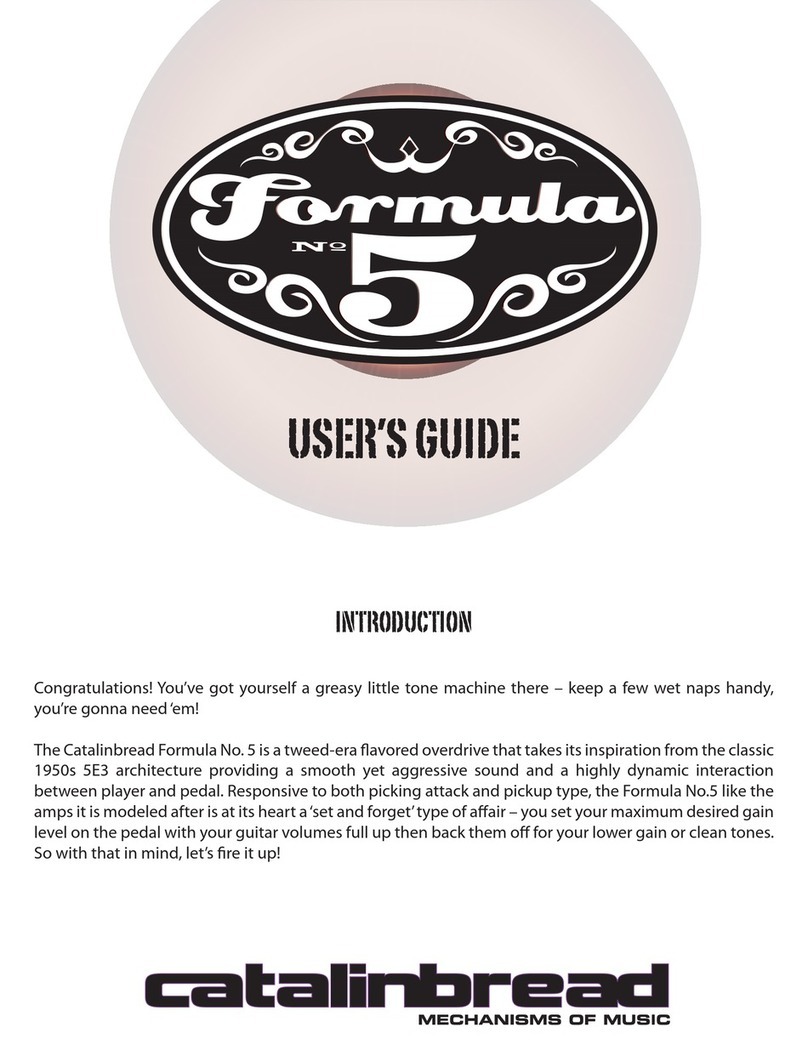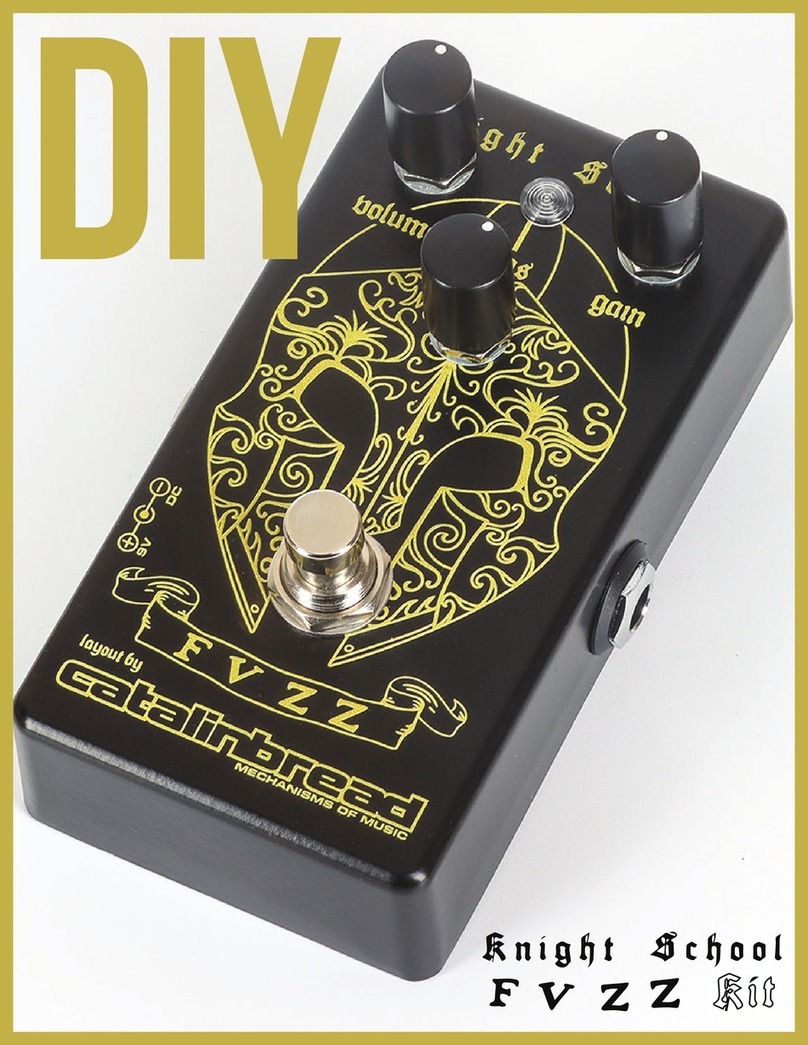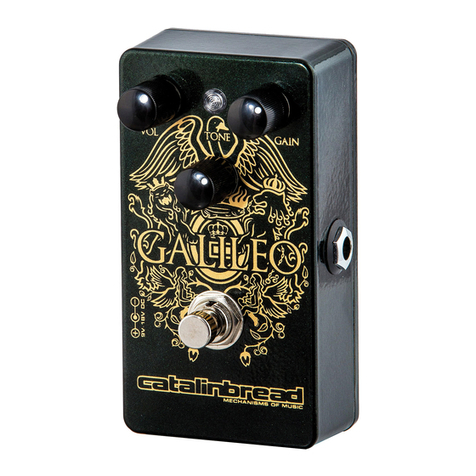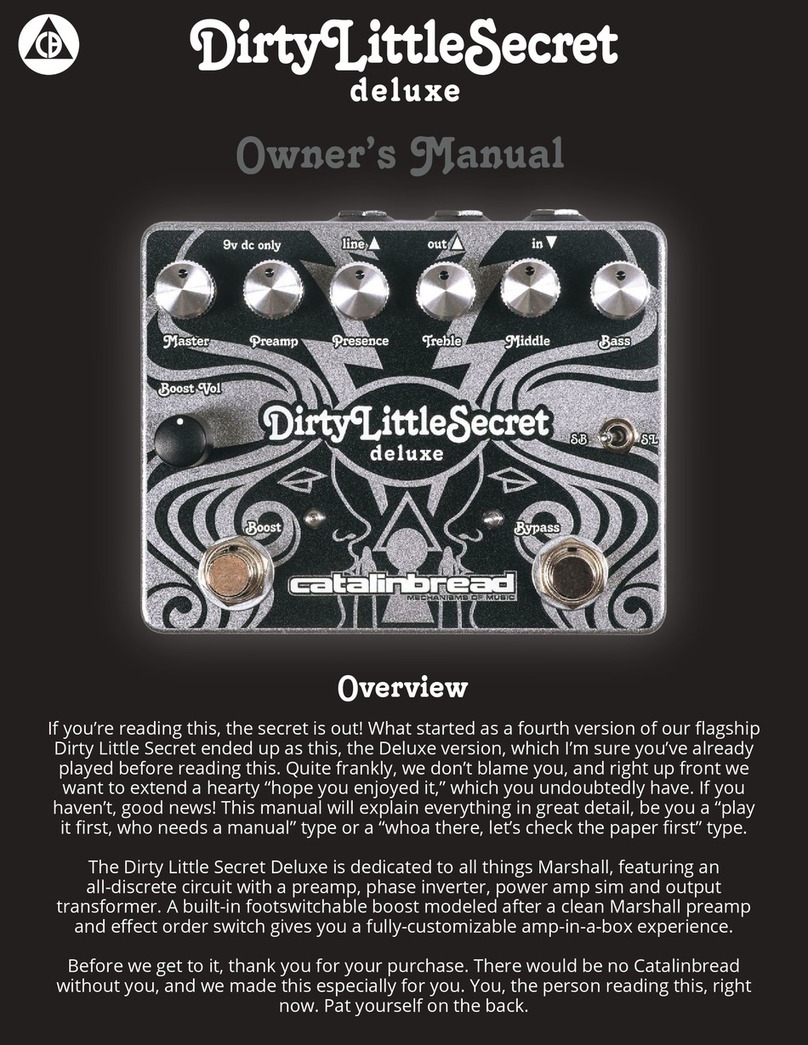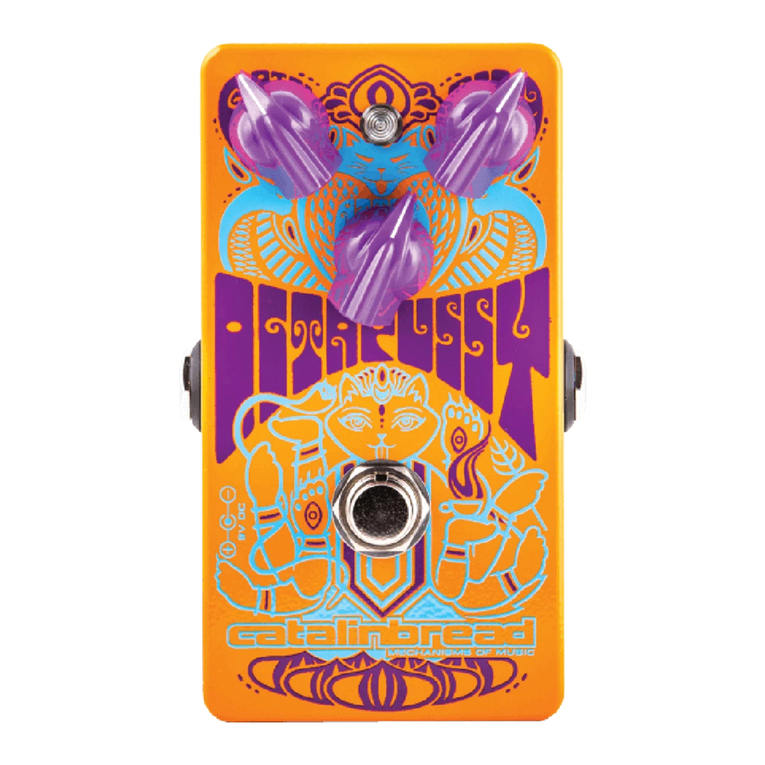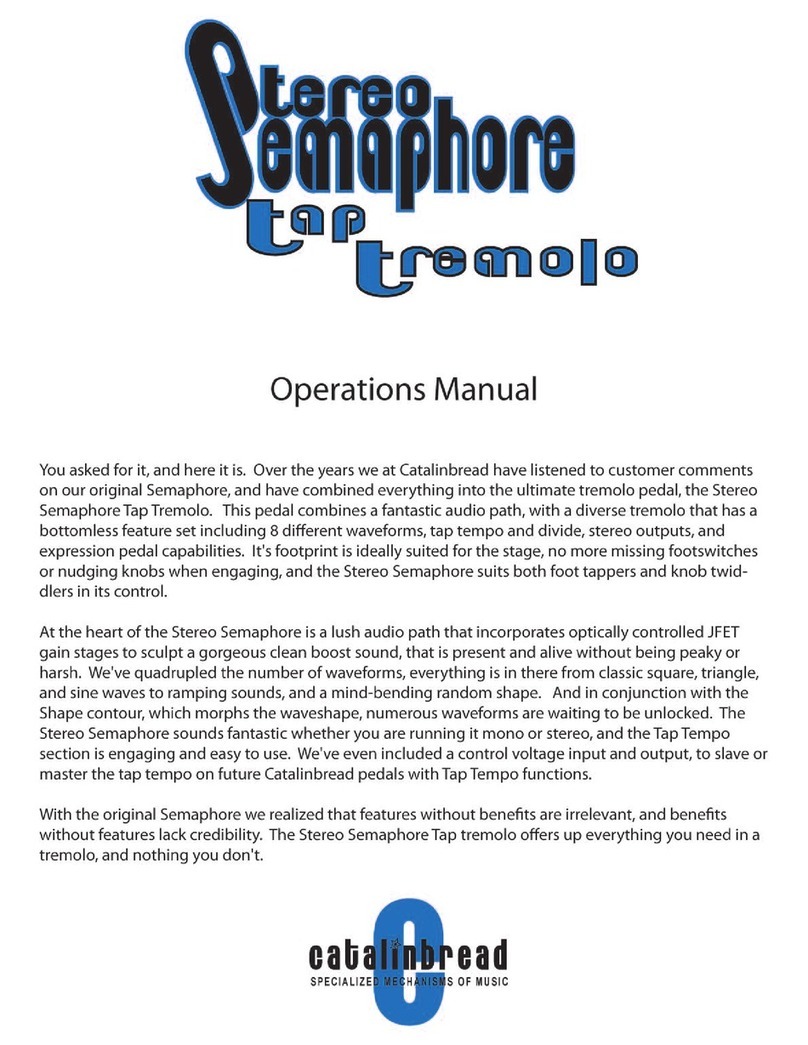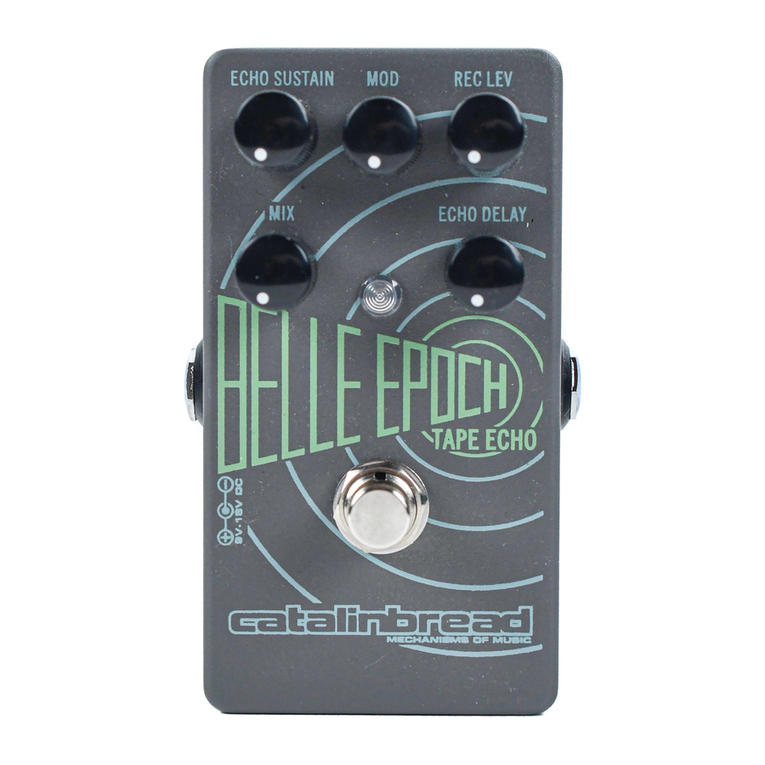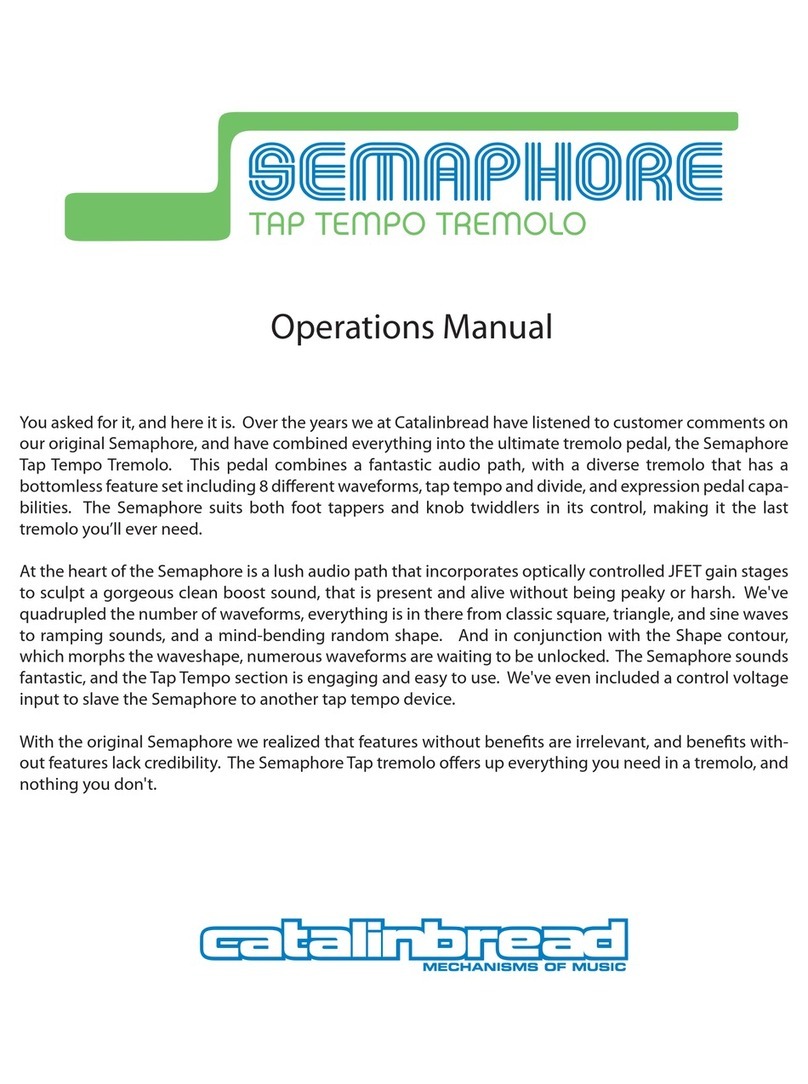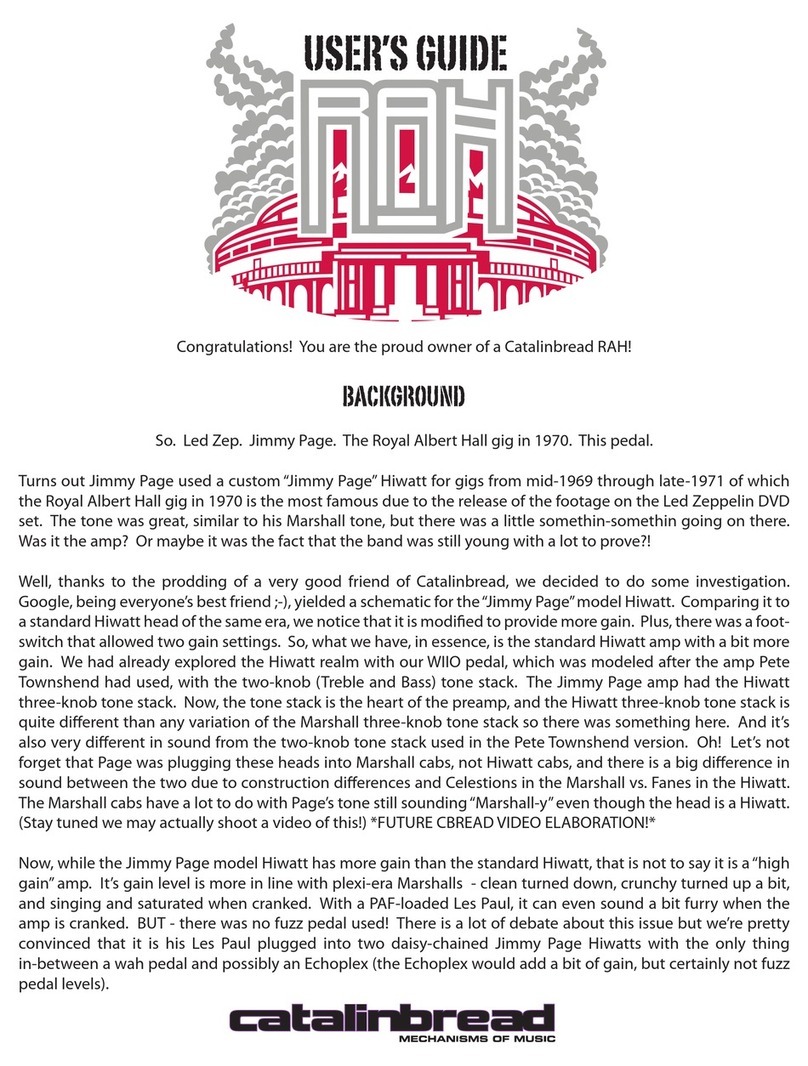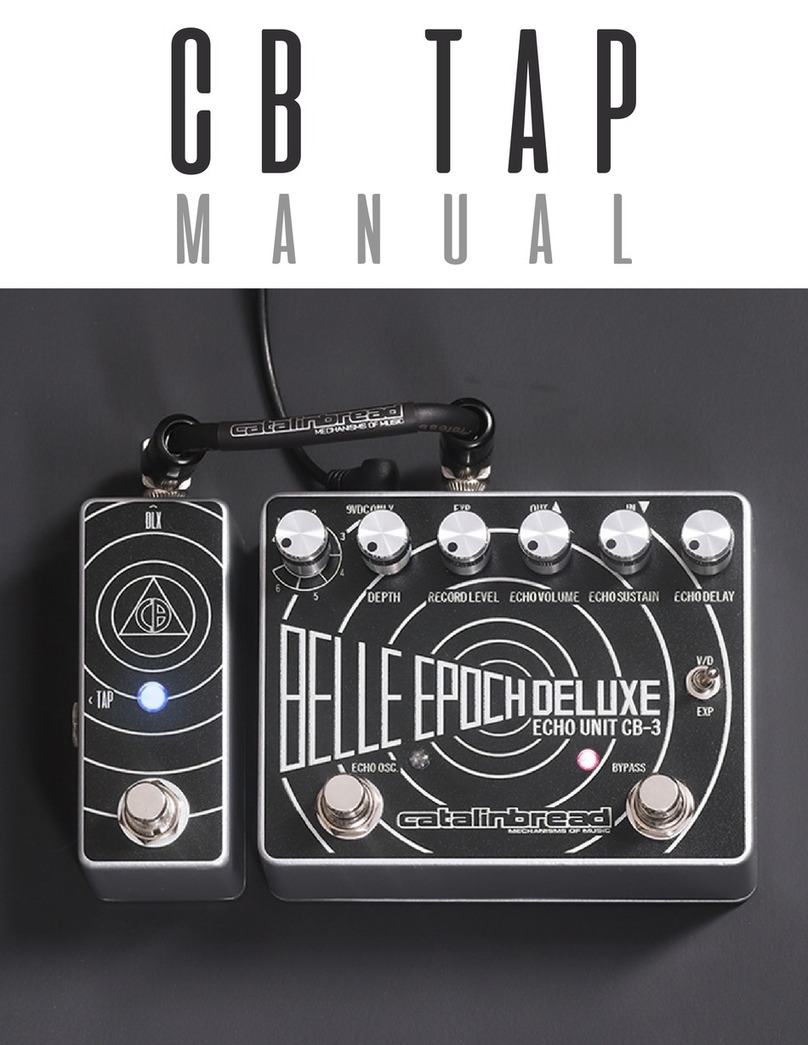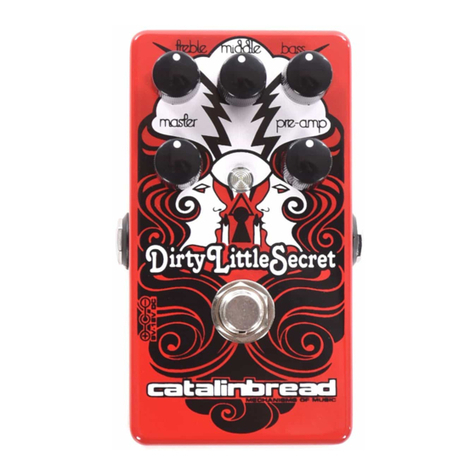
CONTROLS
Octapussy features three carefully voiced controls that are responsive and
musical as you want to be throughout the entire range of the knobs.
Attn (Attenuate) This control should normally be set full counter-
clockwise. For best tone and response, only attenuate when you’ve got the
Gain and Body knobs really cranking and need to reduce the output some.
Gain This control increases the gain for more fuzz, harmonics, and upper-
midrange frequency boost. It is voiced to be usable throughout its range
from minimum all the way to maximum.
Body This control increases the bass response or “thump” frequencies. Like the Gain knob, it also increases
output and harmonic content. Technically, it is a negative-feedback loop with variable frequency response.
But let’s not dwell on technicals.... this is another MOAR knob!
To get the best feel for what this knob does, set it at minimum and then slowly bring it up as you thump the
low E string on your guitar. You’ll hear (and feel!) the low end thump increase as you turn up the Body.
DESIGNER'S NOTES
I’ve been looking forward to getting the time to develop this pedal for some time now. I’m a major octave-up
fuzz fanatic and own several ne examples from other makers. What I wanted to do was take what I loved about
them, eliminate what I thought were their shortcomings, and add a little bit of my own vision to it.
A lot of octave-up fuzzes do the upper fretboard octave thing just ne. But then maybe they didn’t sound very
good on chords or low strings. Others were cool but way too compressed and pinched sounding for my tastes.
It is an absolute requirement for me that the circuit responds to changes in playing dynamics and guitar settings,
and also be able to stack into other dirt pedals.
So, I broke out the breadboard and went to work. I knew the circuit had to be “simple” and essential. Usually, the
more parts and circuit complexity the more compressed and less dynamic the response. I also knew I wasn’t
going to do a direct clone of any existing circuit.
After much experimentation, I ended up with a very elegant design that needs only 3 silicon transistors and two
diodes at the heart of the circuit. There are two main blocks in an octave fuzz circuit - the driver and the inverter.
I came up with a driver design that is very very open and gives a wide range of response while being dead quiet
even with the controls maxed out. It incorporates a special variable frequency negative feedback loop
of what gives Octapussy such an extreme range of
touch sensitivity. The inverter circuit is where the
“octaving” happens. For it to work the best it must be
completely balanced at its positive and inverted
outputs. To that end, there is a trimmer pot on the
circuit board that allows us to tune each one for the
perfect balance. It is not recommended that you ddle
with this trimmer. Should it get moved by accident
(not sure how that would happen, but!..), contact us
and we can tell you how to recalibrate it.
Another key parameter I worked is parts selection. I
spent much time comparing the qualities of different
types of capacitors and resistors in each position in the
circuit and selected the types that gave the best possi-
ble tone and response. Many pedals are designed with
no regard to the type of parts used, only considering
the nominal value (e.g. 2.2uf or 1kOhm). It makes a
difference! Sometimes subtle, sometimes epic! I don’t
like to leave stones unturned so I investigate this area
with every pedal I design in order to achieve the best
sound and response I can.
I’m gonna stop writing now so you can stop reading
now and get back to exploring the wonderful, mystical
world of the Catalinbread Octapussy!
Play on brother, play on sister...
- Howard Gee, Catalinbread
Guitarist, Circuit Designer, and Audio Janitor
that is part
